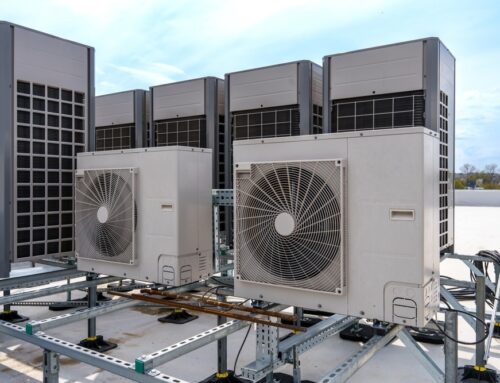As new HVAC technology comes out, it continues to improve the lives of homeowners and technicians. The systems are becoming more efficient, making your home more comfortable with a decrease in energy bills. A form of technology that’s recently becoming popular among homeowners is variable speed HVAC systems. They adjust to temperature demands and increase the system’s precision. If you’re wondering how a variable speed HVAC system can benefit you, read on! We’ll go over how the technology works and how it impacts your system’s efficiency.
Variable Speed HVAC Compressors
Most often, variable speed HVAC refers to the type of compressor found in heat pumps and air conditioners. All HVAC systems have some sort of compressor, and it’s considered the heart of the system. It’s responsible for creating the cold and hot air circulating throughout the home.
Single-speed compressors have only two settings, ON and OFF. These are found in most homes and buildings. There is a wide range of capacities with variable-speed compressors, from 30%-100%, and can toggle between them. Depending on what you need, the system delivers different levels of output. For example, during the hot summer days, the system may function at 90% or 100% but will operate at a lower capacity during the winter.
Variable Speed HVAC Fan Motors
Along with the compressor, the variable speed can improve the blower motor as well. Similar to the compressor, the fan operates at various speeds. A variable-speed fan gives you better control over the air that’s circulating in the home. A minor annoyance can be on a cold morning when you start up your heating unit, only for it to blow cold air out as it starts up. A variable-speed fan prevents this from happening! Additionally, it also can use up to 75% less energy than single fan motors use for the same amount of air. Less energy means more money in your pocket!
How It Works
You may still be wondering how exactly the system works. You have to think about how your HVAC system uses energy. Energy use is the highest when the system is on. With single-speed systems, they’re operating at 100% capacity when turned on, using the most amount of energy possible. Variable-speed systems limit the unit’s strain by letting components ease in, using less power to perform similar tasks. Once the room’s temperature reaches the point specified on the thermostat, the variable-speed system minimizes the effort (and strain) needed to maintain the temperature.
The Benefits of Variable Speed Systems
So, there’s the final question of how a variable speed HVAC system can benefit you. You’ll be happy to find out that improved efficiency isn’t the only benefit! It limits the temperature swings some home with older HVAC units experience and keeps rooms at a consistent temperature. The home’s air quality will increase, helping those who suffer from asthma or allergies. Air circulates through the filters more often, keeping airborne contaminants out of the home. It also works as a dehumidifier by picking up moisture in the air, making those humid San Diego summers much more bearable.
Atlas HVAC, Inc.
When it comes to HVAC technology, our team of experts stays up to date on all of the latest technology to make your life better. Our goal is to improve efficiency while reducing your costs! If you’d like to learn more about variable speed HVAC systems and how they benefit you, feel free to reach out. Our phone number is (877) 452-8527, or you can contact us through our website by clicking here.




